This past December, DHM Research conducted the most recent wave of an ongoing survey among Oregonians to track and gauge public opinion across a variety of topics. This wave included a deeper dive into the topic of public safety, which is among the top areas of concern for Oregonians today.
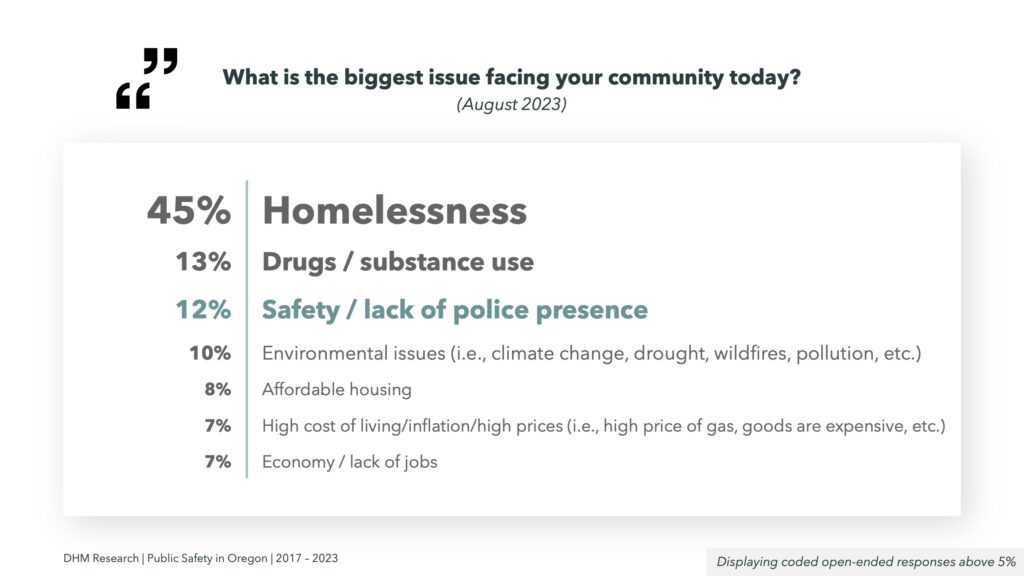
The following are key findings about Oregonians’ confidence in people and organizations in the criminal justice system spanning from January 2017 through December 2023.
Confidence in Criminal Justice System Officials and Organizations
Oregonians today have the most confidence in their local police department and juries—which were the only items tested that reached 50% confidence—followed by their county sheriff, the FBI, and county judges in their community. Oregonians have less confidence in the Oregon Supreme Court, the United States Supreme Court, their county district attorney, and public defenders.
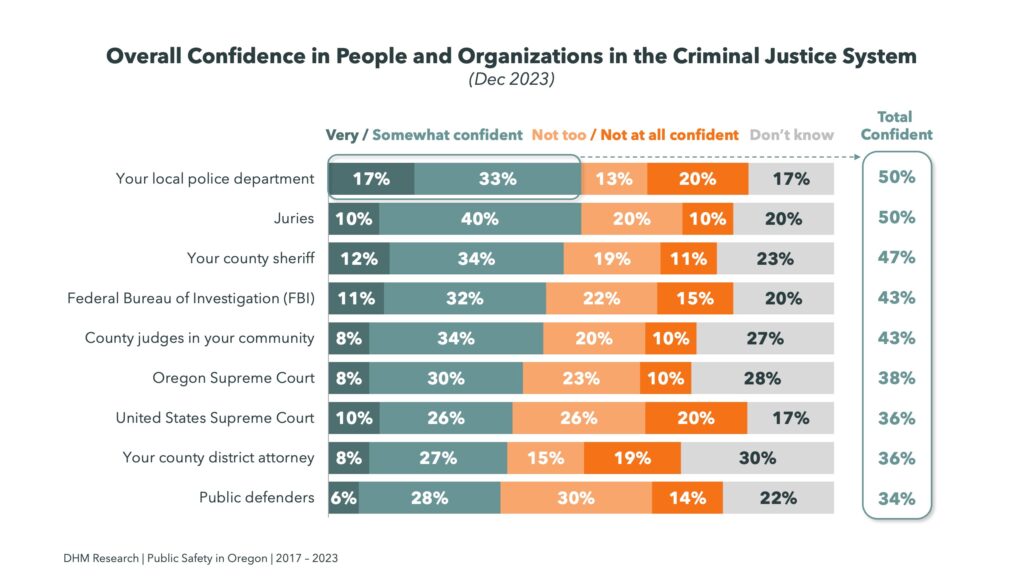
Changes in Confidence Levels Over Time: 2017 – 2023
Overall, confidence in criminal justice system officials and organizations has been on a downward trend since 2017, when DHM began tracking these opinions. Over the past seven years, confidence has dropped about 20 to 30 percentage points overall and has declined more sharply since 2022—dropping an additional 10 to 20 percentage points across all items tested.
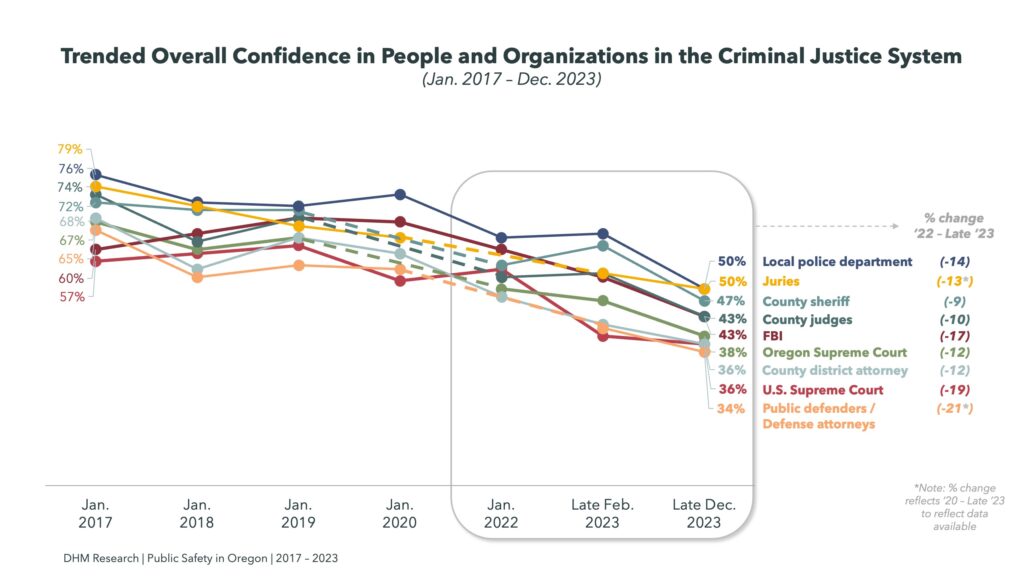
After a dip in 2018, confidence seemed to be on an upward shift in 2019 heading into 2020, especially among local police departments and the FBI. However, the upward progress was halted by the onset of the COVID-19 pandemic, a tumultuous political landscape, and the nationwide reckoning with racial justice in 2020—all of which have had lasting effects on public opinion today.
Analysis of the trended data by demographic groups reveals a few key players that are consistently less confident than others: young Oregonians ages 18-44, women, and Oregonians of Color. The analysis below is an example that pieces together “who” and “how” with possible “whys” to better understand Oregonians’ perceptions of important figures in the criminal justice system who are at the forefront of big conversations this election year.
Deep Dive: Confidence in Local Police Departments
Oregonians have grappled with perceptions of police over time. There have been more discussions among community members on the desired level of police response to different issues, especially since the widespread protests and increased discussion of racial justice in the summer of 2020. Even though local police departments have consistently received the highest confidence ratings among the public safety officials tested, Oregonians’ confidence in local police is still on a downward trend.
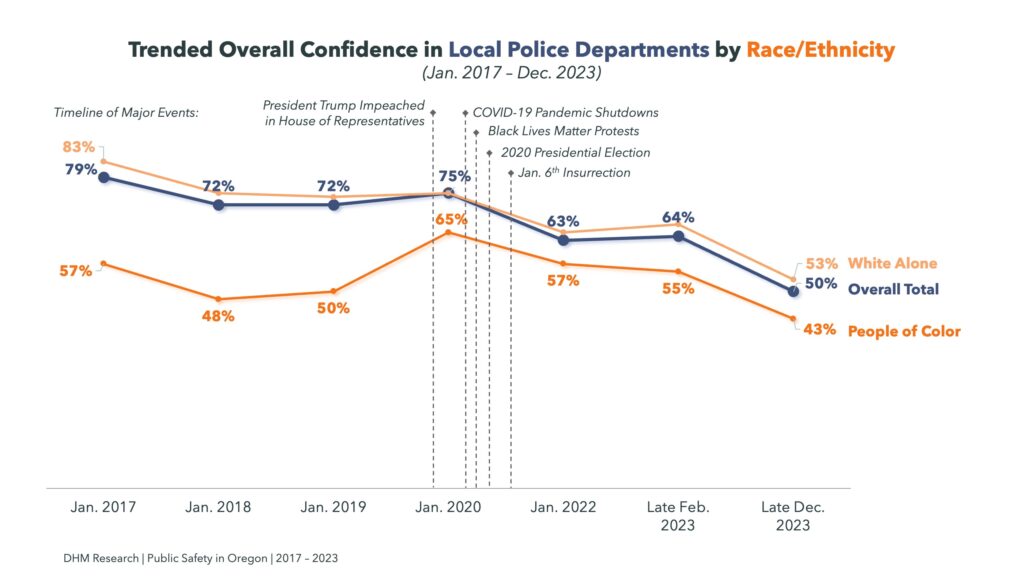
Those who are white have followed the overall confidence trendline, while People of Color have consistently reported lower confidence levels. Between 2019 and 2020, confidence jumped up by 15 percentage points among Oregonians of Color, but major events in 2020 coincided with a steady downward trend in confidence, bringing us to a new low of 43% in the present day.
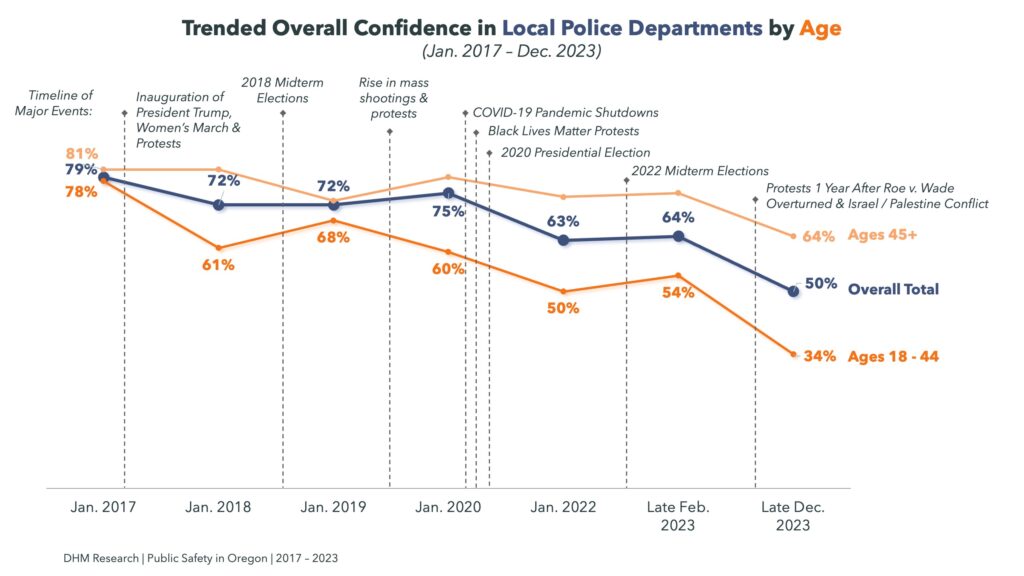
Oregonians ages 45 and older tend to follow or exceed the confidence trendline. However, younger Oregonians’ confidence in local police departments has been consistently below the total and follows a distinct pattern: they regain some positivity after midterm elections and then become drastically more negative during moments of national protests, culminating in a current low of 34%.
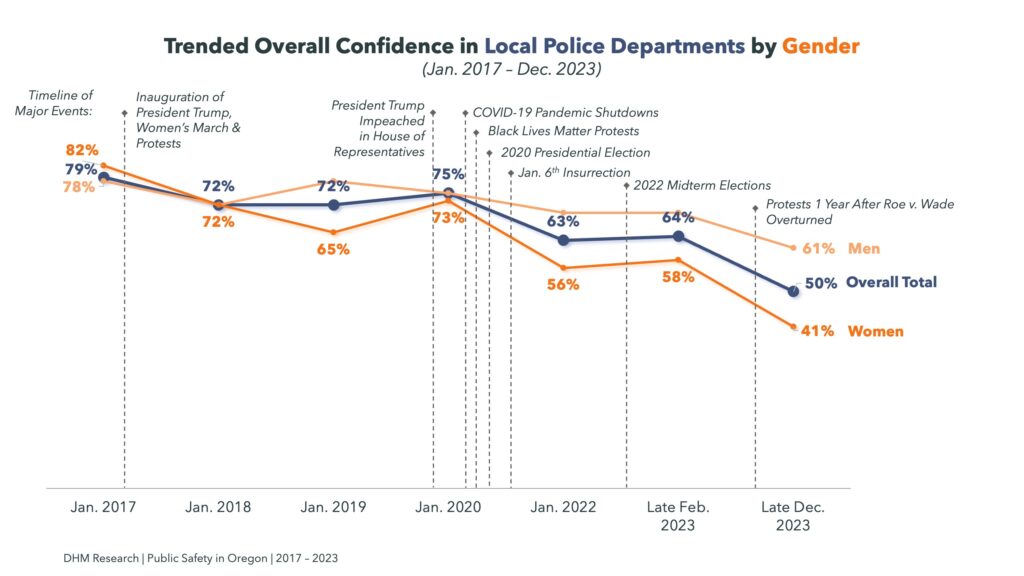
Men follow or exceed the overall confidence trendline, but women’s confidence in local police departments is rockier over time. Women’s confidence started slightly higher than men’s in 2017, but national issues related to gender-based violence and the inauguration of President Trump preceded a drop in confidence that didn’t rebound until Trump’s impeachment in late 2019. Women’s confidence dropped again after the myriad of events in 2020, rebounded slightly after a midterm election, and then dipped down to today’s new low of 41%. The new low came after a year of protests related to the loss of reproductive health protections and news about criminalization and penalties—including arrest and imprisonment—people have endured for pursuing reproductive healthcare.
Assessing demographic shifts such as the ones above can help us understand voters’ mindsets heading into an election year with potential police funding and public safety measures on the ballot.
